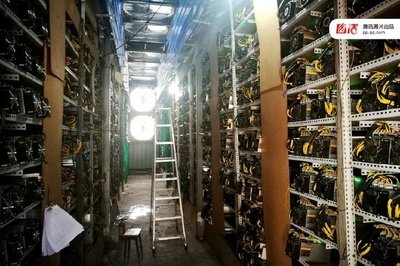As the world of cryptocurrency relentlessly evolves, innovation is not just confined to blockchain algorithms or financial applications. A lesser-discussed yet critical arena is the physical infrastructure supporting crypto mining—particularly the cooling systems that keep mining rigs operational and efficient. Amid rising electricity costs and the ever-intensifying computational demands of Bitcoin (BTC), Ethereum (ETH), and even newer coins like Dogecoin (DOG), advanced cooling techniques have emerged as game-changers. Russian cooling innovations, known for their robustness in harsh environments, are inspiring a new frontier in mining machine management that isn’t simply about brute computing power but also the art of thermal regulation.
Crypto mining machines—those complex, high-powered rigs consisting of ASIC miners and GPUs—are the backbone of blockchain validation and security. However, these machines generate immense heat, threatening operational stability and longevity. Traditional air cooling methods, once sufficient, struggle to keep pace with modern miner densities and power output. Herein lies the crux: efficiency in crypto mining is not only a factor of hash rate but equally hinged on how power-hungry machines are cooled. Enter Russian cooling technologies, which have been honed in extreme climates, bringing a combination of precision liquid cooling and energy-efficient heat dissipation strategies that offer a blueprint for sustainable mining operations. These systems not only diminish hardware failure rates but also allow mining farms to push their equipment to peak hash rates without overheating.

Consider the implications within mining farms, vast complexes housing hundreds or thousands of miners. These facilities consume enormous amounts of electricity while simultaneously battling heat output that can reach environmental tipping points. By adopting the Russian cooling paradigm, operators optimize their energy expenditure, reducing the need for power-hungry air conditioning units and ultimately lowering operational costs. Consequently, mining farm owners can amplify their profit margins in a volatile market environment. Furthermore, the modularity of these cooling systems allows for scalable deployments—ranging from boutique installations for ETH enthusiasts with GPU rigs to industrial-sized Bitcoin ASIC mining operations.
Mining machine hosting services represent another critical component of this ecosystem. These platforms offer clients the option to deploy mining hardware remotely in optimized data centers, often leveraging cutting-edge thermal regulation technology. With the integration of advanced Russian-style cooling systems, hosting providers are promising not only enhanced uptime but also environmental sustainability. This is a compelling proposition for crypto investors wary of the environmental impact that mining rigs have generated in recent years. The capacity to maintain cooler, more energy-efficient environments directly aligns with the global push toward greener blockchain initiatives, making mining hosting an ecological and economically savvy choice.
Bitcoin’s dominance in the cryptocurrency market hasn’t diminished the coast-to-coast innovations brought about by Ethereum’s transition to proof-of-stake, nor Dogecoin’s meme-powered growth. Each currency demands different hardware efficiencies and mining intensities. ASIC miners specifically designed for BTC extraction operate under different thermal loads compared to GPU arrays optimized for ETH or DOG mining. As a result, tailored cooling solutions become imperative—Russian adaptive cooling modules offer this precision, adjusting dynamically to fluctuating mining loads and environmental conditions. This not only extends the lifespan of miners but also maximizes uptime and hash power, a crucial advantage in the highly competitive mining space.

Meanwhile, exchanges and market platforms closely monitor the mining sector’s growth, as fluctuations in mining output directly impact currency circulation and liquidity. Efficient mining operations enabled by enhanced cooling indirectly foster market stability by ensuring consistent block generation rates and reliable transaction confirmations. This synergy underlines a critical, often overlooked nexus between physical mining infrastructure and digital currency ecosystems. Miners are not just hardware operators; they serve as the heartbeat of cryptocurrencies like BTC, ETH, and DOG, enabling trustless, decentralized systems in real-time.
The future of crypto mining is therefore not solely measured by raw terahashes per second. Instead, it demands an ecosystem approach—embracing power optimization, cutting-edge thermal management, and smart hosting solutions inspired by global innovations like those from Russia’s extreme cooling technologies. Whether you’re a miner pushing a fleet of ASIC rigs, a hosting provider aiming to reduce your carbon footprint, or an investor evaluating the sustainability of your digital asset portfolio, integrating advanced cooling offers tangible benefits.
In conclusion, as blockchain networks become more complex and mining difficulty escalates, the symbiosis between computing power and innovative cooling opens new avenues for profitability and sustainability. Russian cooling engineering introduces a robust, energy-efficient model perfectly tailored for the harsh realities of cryptocurrency mining. Their influence is beginning to ripple across the industry—from bespoke mining rigs and massive mining farms to hosting services that package cooling and computing sophistication into turnkey solutions. This blend of power and coolness not only shapes the future of mining mechanics but also reinforces cryptocurrency’s enduring promise in the modern financial world.
Leave a Reply